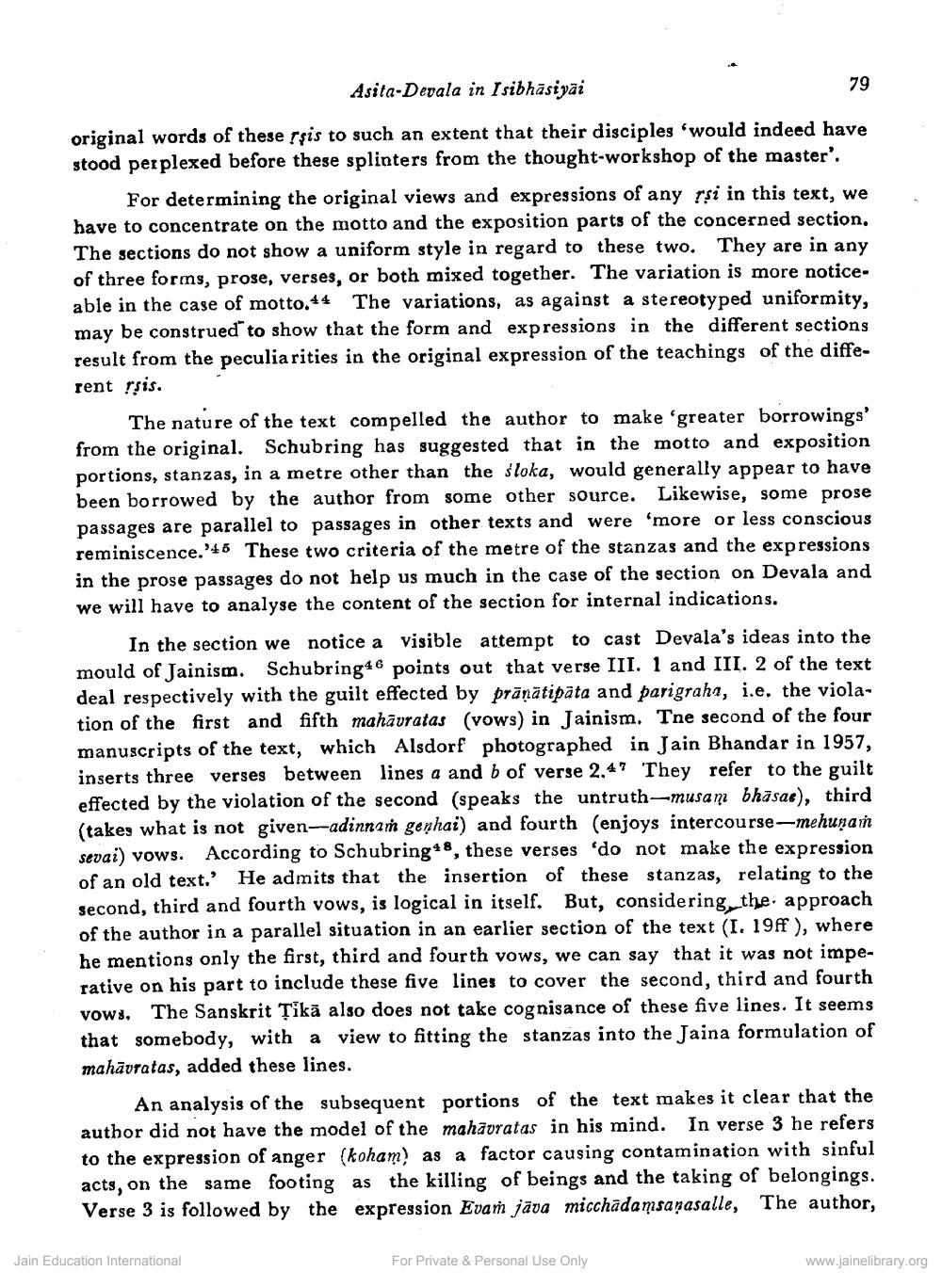Book Title: Asita Deval in Isibhasiyai Author(s): Lallan Gopal Publisher: Z_Aspect_of_Jainology_Part_3_Pundit_Dalsukh_Malvaniya_012017.pdf View full book textPage 6
________________ Asita-Devala in I sibhāsiyai 79 original words of these ssis to such an extent that their disciples 'would indeed have stood perplexed before these splinters from the thought-workshop of the master'. For determining the original views and expressions of any rși in this text, we have to concentrate on the motto and the exposition parts of the concerned section, The sections do not show a uniform style in regard to these two. They are in any of three forms, prose, verses, or both mixed together. The variation is more noticeable in the case of motto. 44 The variations, as against a stereotyped uniformity, may be construed to show that the form and expressions in the different sections result from the peculiarities in the original expression of the teachings of the different rşis. The nature of the text compelled the author to make 'greater borrowings' from the original. Schubring has suggested that in the motto and exposition portions, stanzas, in a metre other than the sloka, would generally appear to have been borrowed by the author from some other source. Likewise, some prose passages are parallel to passages in other texts and were more or less conscious reminiscence.'45 These two criteria of the metre of the stanzas and the expressions in the prose passages do not help us much in the case of the section on Devala and we will have to analyse the content of the section for internal indications. In the section we notice a visible attempt to cast Devala's ideas into the mould of Jainism. Schubring46 points out that verse III. I and III. 2 of the text deal respectively with the guilt effected by prānātipāta and parigrahı, i.e. the violation of the first and fifth mahāuratas (vows) in Jainism. Tne second of the four manuscripts of the text, which Alsdorf photographed in Jain Bhandar in 1957, inserts three verses between lines a and b of verse 2.47 They refer to the guilt effected by the violation of the second (speaks the untruth-musam bhāsae), third (takes what is not given-adinnım genhai) and fourth (enjoys intercourse-mehunan sevai) vows. According to Schubring 8, these verses 'do not make the expression of an old text.' He admits that the insertion of these stanzas, relating to the second, third and fourth vows, is logical in itself. But, considering the approach of the author in a parallel situation in an earlier section of the text (I. 19ff ), where he mentions only the first, third and fourth vows, we can say that it was not imperative on his part to include these five lines to cover the second, third and fourth vows, The Sanskrit Ţikā also does not take cognisance of these five lines. It seems that somebody, with a view to fitting the stanzas into the Jaina formulation of mahāvratas, added these lines. An analysis of the subsequent portions of the text makes it clear that the author did not have the model of the mahāvratas in his mind. In verse 3 he refers to the expression of anger (koham) as a factor causing contamination with sinful acts, on the same footing as the killing of beings and the taking of belongings. Verse 3 is followed by the expression Evam jāva micchadamsaņasalle, The author, Jain Education International For Private & Personal Use Only www.jainelibrary.orgPage Navigation
1 ... 4 5 6 7 8 9 10 11 12 13 14
